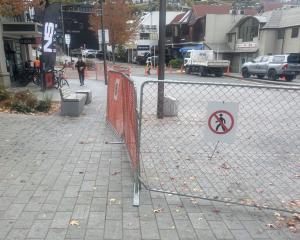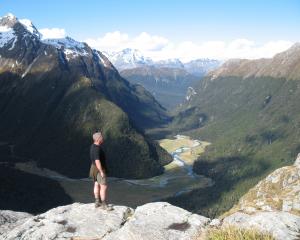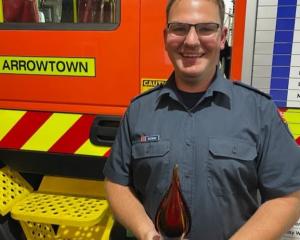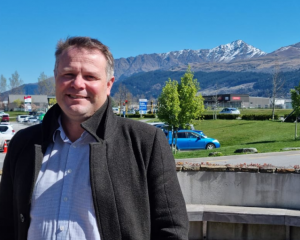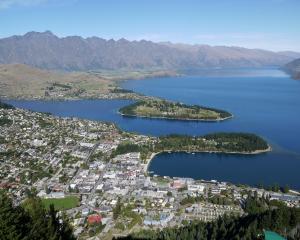As skiers and boarders hit the slopes of Coronet Peak and Cardrona skifields today, Guy Williams asks what the snow industry is worth to the Otago economy, and gets a surprising range of answers.
One thing can be said with certainty about Otago's ski industry - it is growing fast.
The Queenstown Lakes district's four ski areas are predicting a 30% increase in visitors this winter if the snow keeps coming.
Leading the charge will be hordes of Australians, crossing the Tasman on direct flights to Queenstown Airport.
The airport is expecting those flights to peak at almost 60 a week this winter - a record.
However, ask industry representatives what the ski business is worth to the region and you will get a confusing range of answers.
It seems to be an apples and oranges problem: everyone has a different way of measuring the value of the so-called ''white economy''.
The last proper economic analysis is now a decade old.
Initiated by the region's skifield operators and paid for by New Zealand Trade and Enterprise, it estimated the sector generated $105 million in spending in the Southern Lakes region, creating more than 3300 seasonal full time equivalent jobs.
Since that report was published, Australia's ski industry - in concert with government bodies - has commissioned two reports on its economic contribution.
Paul Anderson, chief executive of Coronet Peak and The Remarkables owner NZSki, said an updated study would be valuable, but no-one needs convincing of the sector's importance.
Agencies such as Tourism New Zealand already know that ski tourists ''spend a lot of money''.
While conceding that skifield operators keep their earnings data close to their chests, it was not difficult to extrapolate a ''reasonable estimate'' of direct spending on the region's ski industry.
''For every dollar spent on a ski area, you've got an 11 times multiplier in terms of direct and indirect spend across the economy,'' Mr Anderson said.
Applying that multiplier, he estimated spending generated by the ski sector nationally at ''upwards of a billion dollars''.
The four Southern Lakes ski areas make up between 40% and 50% of that.
Mr Anderson said the numbers in the 2005 study would have risen dramatically in the subsequent decade.
When NZSki was acquired by Trojan Holdings and other shareholders in 2002, five international flights a week were arriving in Queenstown.
Compare that with the 59 flights a week expected at this winter's peak.
''Our estimate is we've gone from 660 seats a week to nearly 9000.
''That gives you an idea of how many more overseas visitors are coming in. It's just been phenomenal growth.''
Lake Wanaka Tourism general manager James Helmore agreed there was a lack of precise, up-to-date information on the ski industry's contribution to the Otago economy.
A rule of thumb is that for every dollar spent by visitors on the mountain, another eight to 10 were spent off the mountain.
He confirmed some back-of-the-envelope calculations by the ODT were a rough guide.
Assume 600,000 skier days in Otago, and deduct the 25% of skier days enjoyed by locals, leaving 450,000.
Then assume they are all big-spending Australians, and multiply by their estimated daily spend of $225.
That produces earnings generated by Otago's ski industry of $101.3 million.
Hundreds of young people who flock into the region to work in the sector each winter contribute a large chunk of their income to the local economy.
''The ski areas themselves employ a heap of staff,'' Mr Helmore said.
''And those staff have to spend on their living costs, and that drives the economy quite strongly, too. The multiplier effect is quite massive.''
Queenstown's tourism promotion agency cannot put an exact number on what the white economy is worth to the region, but Destination Queenstown chief executive Graham Budd said he had all the data he needed to make the case for funding to promote the region.
An expenditure index published by the Ministry of Business, Innovation and Employment shows that spending by Australian visitors in Queenstown during winter increased by more than 90% between 2008 and last year.
Although he did not dismiss the value of economic research, it ''needs to be done with a purpose in mind''.
''If it's just a pat on the back, there's no point.''
He had no doubt the 2005 numbers had ''increased significantly''.
The author of that 2005 study is Simon Milne, professor of tourism at the Auckland University of Technology and a director of the New Zealand Tourism Research Institute.
He said the study was commissioned on the back of a ''burst of activity'' early last decade when skifield operators collectively funded extensive research into their industry and its value to different regions.
Prof Milne said data could be mined from the Government's international visitor survey, but a more ''fine-grained analysis'' about the ski industry's economic contribution in different regions was valuable.
''The thing about having good data is that it helps to make decisions, and it helps to target markets and generate higher yield outcomes.
''Most of the skifields would have their own data, but in terms of being able to plan at regional level and to lobby at an industry scale for increased marketing funding, that's where this kind of research is really critical.''
As well as providing insights into economic performance, such studies help decision makers at local and national government level on ''sensitive issues'' such as the pressure put on Queenstown's housing by temporary workers.
To all those opening day skiers and boarders getting their long-awaited snow fix, all this may be academic. So long as the lift queues are short and the pistes are uncrowded, they will be happy.
But as far as the ski sector's economic contribution is concerned, the white economy appears to be more like a black economy.




